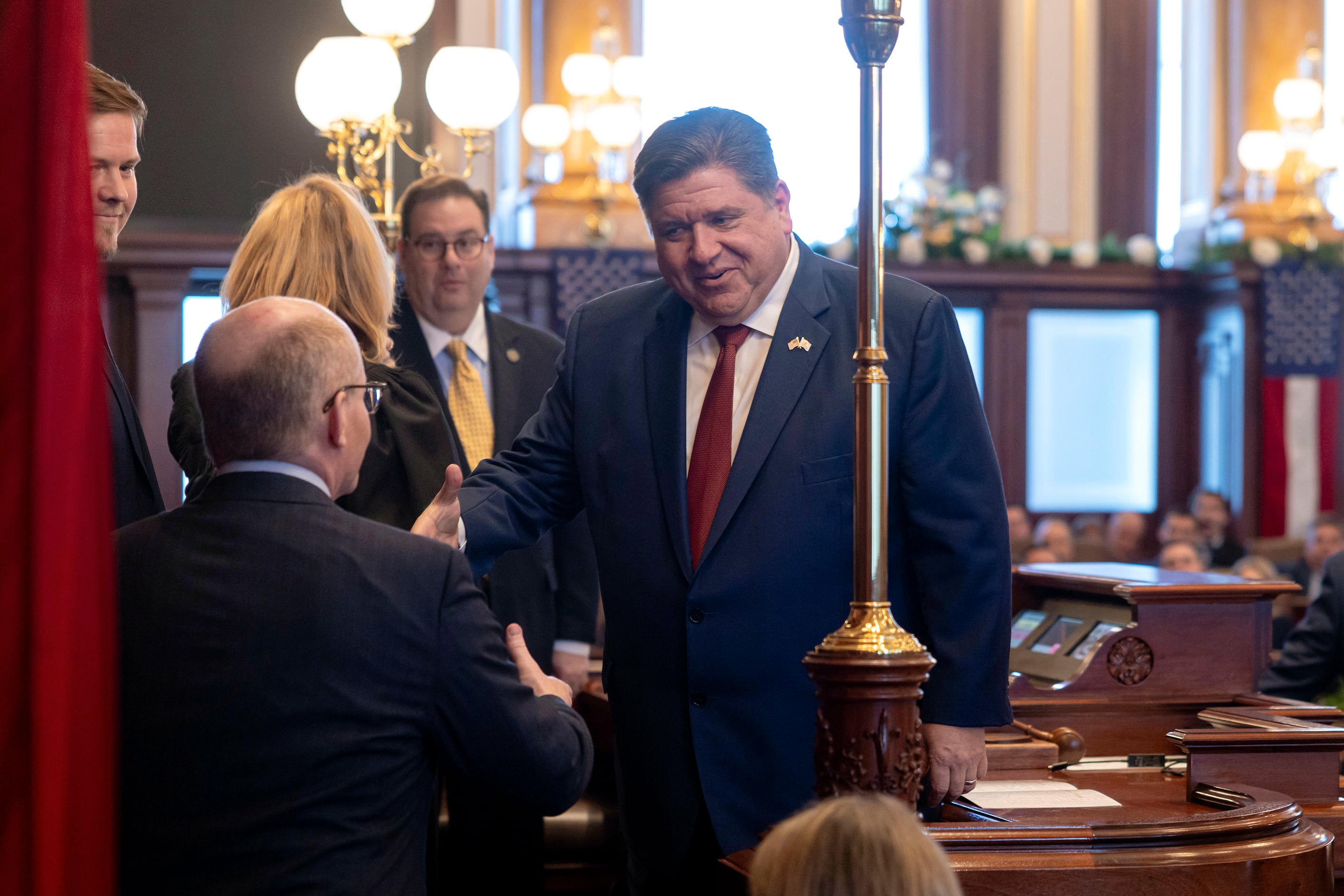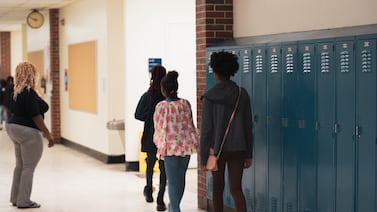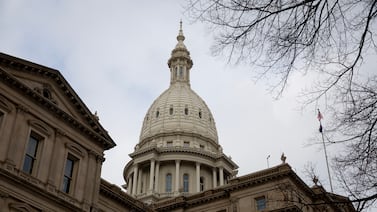Sign up for Chalkbeat Chicago’s free daily newsletter to keep up with the latest news on Chicago Public Schools.
Gov. J.B. Pritzker’s budget proposal for next fiscal year includes increases to early childhood education and additional funding for K-12 schools even as federal COVID-19 relief funds have dried up and schools worry about federal funding under the Trump administration.
Pritzker presented a $53.9 billion spending plan for the state to the General Assembly on Wednesday. The plan would increase funding for the state’s K-12 schools by $350 million, early childhood education programs for low-income families by $85 million, and the state’s scholarship program for college bound students by $10 million.
However, there were some parts of the proposal that kept funding flat for certain programs, such as the state’s Early Childhood Block Grant, which has helped expand public preschool.
In his seventh budget address since becoming governor, Pritzker touted the success of Illinois students. He cited the gains the state’s eighth graders made in reading and math on the nation’s report card in 2024 and high school graduation rates reaching an all time high as represented on the state’s report card.
“I believe in building on what works,” Pritzker said. “So, despite the challenge we are facing this year, my budget proposal increases our commitment to evidence-based funding for public education so that we put new resources in underfunded schools first.”
State legislators must negotiate the final details of the fiscal year 2026 budget – which begins on July 1. The general assembly is scheduled to end on the last day of May, according to the general assembly’s calendar.
The state’s budget process could take on heightened importance with President Donald Trump’s administration cutting or scaling back federal funding. When it comes to education. Trump has vowed to dismantle the federal Department of Education, which administers federal funds to K-12 schools, collects data, and ensures schools are following federal laws such as the Individuals with Disabilities Education Act.
In 2024, the U.S. Department of Education gave Illinois $1.2 billion for Title I funds, money allocated to schools serving a majority of children from low-income families, and almost $1 billion for educating students with disabilities.
Since taking office in January, Trump has filed executive orders that resulted in the department placing employees on paid leave, cancelling contracts, and removing documents and data from its website. Linda McMahon, the president’s pick to head the Department of Education, said in her confirmation hearing last week that she would not cut billions of dollars in funding to schools, but did not say whether schools would lose federal funding if they teach African American history.
Lt. Gov. Julia Statton told Chalkbeat earlier this week that Illinois officials are watching developments at the federal level closely.
“No matter what happens at the federal level,” Statton said. “We’re certainly going to try to do everything that we can to make sure that Illinoisans and students in Illinois get access to the education that they deserve.”
Here’s what you should know about Pritzker’s fiscal year 2026 budget:
Early childhood education continues to see increases
Under Pritzker’s proposal, the Illinois State Board of Education’s Early Childhood Block Grant will stay flat for a total of $748 million. The state board was hoping to receive an additional $75 million to bump the program from $748 million to $823 million.
For the state Department of Human Services, the governor asked for an additional $10 million for Early Intervention, a program for children with disabilities ages 0 to 3, and an increase of $85 million for the Child Care Assistance Program, a program to help low-income families access child care. The state’s home visiting program funding will remain flat.
While some early childhood education advocates thanked Pritzker for his continued investment in programs for families with young children, they are disappointed that many programs won’t see increases.
“When we fail to provide sufficient state funding for programs like Early Intervention and home visiting, we fail children during their most crucial developmental periods, and we leave families unsupported in caring for their little ones,” Celena Sarillo, Executive Director of Start Early, an advocacy organization based in Chicago.
During the last General Assembly session, lawmakers approved the creation of the state’s Department of Early Childhood and allocated $16 million in funding to set up the new agency. This year, Pritzker is proposing $21.7 million for the new department.
This is the third year of Pritzker’s Smart Start Illinois initiative, which aims to expand public preschool to serve 20,000 more 3- and 4- year olds throughout the state. Pritzker announced the initiative after being reelected in 2022 with a promise to get universal preschool back on track after the coronavirus pandemic hindered some of his initial plans.
In the first year of the program, Pritzker and State Superintendent Tony Sanders announced that the state was able to add 5,800 public school seats for young children.
K-12 could remain steady for the next year.
Pritzker asked the General Assembly to increase the budget for K-12 schools from $10.8 billion to $11.2 billion. That’s similar to what State Superintendent Tony Sanders recommended in January.
Included in his request was a $350 million budget increase for the state’s K-12 schools to be distributed through the state’s evidence-based funding formula, which provides funds to local districts based need, drawing on metrics such as the number of students from low-income families, students with disabilities, and English learners and also factors what schools can raise through local property taxes. In 2017, state lawmakers made a bipartisan promise to increase funding by at least $350 million annually until all districts reached “adequate funding.”
Local education advocates have been calling on the state to increase funding by at least $550 million to help get schools to “adequate funding” more quickly. A report last year found that the state will not hit its funding goal by 2027, but by 2034 if the state continues to add $350 million each year.
Despite the continued increases, many school districts across the state will grapple with smaller budgets regardless of what the state kicks in. That’s because $7 billion in federal emergency COVID-19 relief funding is now gone.
Scholarships for students to access college
Pritzker proposed increasing a scholarship program for college bound students by $10 million.
The proposal to boost the Monetary Award Program will support students from low-income families who are planning to attend or already in school. The increase would bring the program up to a total of $721.6 million. The maximum amount of aid a student could get annually would be $8,604, up from $4,869 in fiscal year 2019.
Correction 2.20.2025: This story has been updated to show that the maximum MAP award would grow from $4,869 in fiscal year 2019 to $8,604 under the governor’s proposal.
Samantha Smylie is the state education reporter for Chalkbeat Chicago covering school districts across the state, legislation, special education and the state board of education. Contact Samantha at ssmylie@chalkbeat.org.






